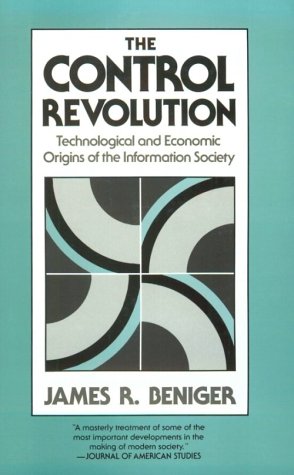Matthew Wisnioski: Engineers for Change: Competing Visions of Technology in 1960s America (2012)
Filed under book | Tags: · 1960s, 1970s, activism, computing, education, engineering, history of computing, history of technology, labour, luddism, military, science, space, technology

“In the late 1960s an eclectic group of engineers joined the antiwar and civil rights activists of the time in agitating for change. The engineers were fighting to remake their profession, challenging their fellow engineers to embrace a more humane vision of technology. In Engineers for Change, Matthew Wisnioski offers an account of this conflict within engineering, linking it to deep-seated assumptions about technology and American life.
The postwar period in America saw a near-utopian belief in technology’s beneficence. Beginning in the mid-1960s, however, society—influenced by the antitechnology writings of such thinkers as Jacques Ellul and Lewis Mumford—began to view technology in a more negative light. Engineers themselves were seen as conformist organization men propping up the military-industrial complex. A dissident minority of engineers offered critiques of their profession that appropriated concepts from technology’s critics. These dissidents were criticized in turn by conservatives who regarded them as countercultural Luddites. And yet, as Wisnioski shows, the radical minority spurred the professional elite to promote a new understanding of technology as a rapidly accelerating force that our institutions are ill-equipped to handle. The negative consequences of technology spring from its very nature—and not from engineering’s failures. “Sociotechnologists” were recruited to help society adjust to its technology. Wisnioski argues that in responding to the challenges posed by critics within their profession, engineers in the 1960s helped shape our dominant contemporary understanding of technological change as the driver of history.”
Publisher MIT Press, 2012
ISBN 0262018268, 9780262018265
296 pages
via a2
Interview with the author (Carla Nappi, New Books in Science, Technology, and Society, audio, 1h)
Review (Caroll Pursell, The American Historical Review, 2014)
Review (Kevin T. Baker, The Sixties, 2013)
Review (Stephen H. Unger, 2013)
Humphrey Jennings: Pandæmonium, 1660-1886: The Coming of the Machine as Seen by Contemporary Observers (1985)
Filed under book | Tags: · 1600s, 1700s, 1800s, history of technology, industrial revolution, industry, literature, machine, mechanics, technology, united kingdom

Pandaemonium, 1660-1886 is a book of contemporary observations of the coming, development and impact of the Industrial Revolution in the United Kingdom, collected by documentary film-maker Humphrey Jennings between 1937 and his early death in 1950. His daughter, Mary-Louise Jennings, and a co-founder with Jennings of Mass Observation, Charles Madge, brought his work to publication in 1985. The book takes its title from the first excerpt within it, the section in Book I of Paradise Lost (1660) in which John Milton describes the building of Pandaemonium, the capital city of Hell. (from Wikipedia)
From the New York Times review (1985): “For Humphrey Jennings, Pandaemonium was a prophetic symbol of industrialism, and it provides not only the title but also the starting point of his attempt to chronicle ‘the imaginative history of the Industrial Revolution.’ This was best done, he thought, by letting those who took part in the process speak for themselves, and Milton’s lines usher in a collection of some 370 texts ranging from the 1660’s to the 1880’s – the testimony of scientists, artists, rich men, poor men and a great throng of miscellaneous witnesses. Between them, these passages (or ‘images,’ as Jennings preferred to call them) are meant to provide a composite picture of how contemporaries experienced the triumph of the machine, how it transformed both their outward circumstances and inner lives.” (Review)
The cover above is from the UK edition.
First published by André Deutsch. London, 1985
Edited by Mary-Lou Jennings and Charles Madge
Publisher The Free Press, New York
First American Edition, 1985
ISBN 0029164702
376 pages
via joandleefe
PDF (30 MB)
Comment (0)James R. Beniger: The Control Revolution: Technological and Economic Origins of the Information Society (1986)
Filed under book | Tags: · advertising, agriculture, bureaucracy, computing, cybernetics, economy, energy, history of technology, industrial revolution, industry, information society, management, mass media, radio, society, technology, telegraphy, telephone, television, transport

“James Beniger traces the origin of the Information Society to major economic and business crises of the past century. In the United States, applications of steam power in the early 1800s brought a dramatic rise in the speed, volume, and complexity of industrial processes, making them difficult to control. Scores of problems arose: fatal train wrecks, misplacement of freight cars for months at a time, loss of shipments, inability to maintain high rates of inventory turnover. Inevitably the Industrial Revolution, with its ballooning use of energy to drive material processes, required a corresponding growth in the exploitation of information: the Control Revolution.
Between the 1840s and the 1920s came most of the important information-processing and communication technologies still in use today: telegraphy, modern bureaucracy, rotary power printing, the postage stamp, paper money, typewriter, telephone, punch-card processing, motion pictures, radio, and television. Beniger shows that more recent developments in microprocessors, computers, and telecommunications are only a smooth continuation of this Control Revolution. Along the way he touches on many fascinating topics: why breakfast was invented, how trademarks came to be worth more than the companies that own them, why some employees wear uniforms, and whether time zones will always be necessary.”
Publisher Harvard University Press, 1986
ISBN 0674020766, 9780674020764
493 pages
via babyalanturing
Review (JoAnne Yates, The Journal of Interdisciplinary History, 1988)
Review (Krishan Kumar, Journal of American Studies, 1988)
Review (Kirkus Reviews)
Book-inspired website
Publisher
PDF (16 MB, updated on 2016-6-16)
Comment (0)
